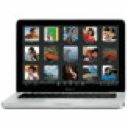
Photo Credit: Techradar
Disclaimer: The Mid-2012 Retina Display MacBook Pro laptops have been discontinued by Apple. This FAQ’s page, however, is up-to-date and will be useful if you are looking for these particular Apple notebooks from the used market. Subsequent Retina Display MacBook Pro models and the general advantages and disadvantages thereof are also explained in this page should you decide to purchase a non-Retina Display or Retina Display laptop.
The Mid-2012 regular MacBook Pro laptops: (1) 13-inch MacBook Pro Core i5 2.5, (2) 13-inch MacBook Pro Core i7 2.9, (3) 15-inch MacBook Pro Core i7 2.3, and (4) 15-inch MacBook Pro Core i7 2.6 are very similar at first glance when compared with the Mid-2012 Retina Display MacBook Pro laptops: (1) 15-inch MacBook Pro Core i7 2.3 (Retina), (2) 15-inch MacBook Pro Core i7 2.6, (3) 15-inch MacBook Pro Core i7 2.7 (Retina).
While the Retina Display MacBook Pro notebook is noticeably thinner, both lines (the regular MacBook Pro and the Retina Display laptops of both dimensions: 13-inch and 15-inch models) share the same overall design ethos. These laptops are milled from a single piece of aluminum with a black backlit keyboard. There are distinguishable differences, too, that is expected given the size and specifications of these Apple products.
External Differences
Similar to the earlier MacBook Pro line with a “Unibody” design, the regular Mid-2012 MacBook Pro laptops essentially use the same but not identical, general black and silver design. Although lacking battery and sleep indicator lights, the Retina Display MacBook Pro laptop is inspired by the same design, while also just a tad bit thinner. Unlike the regular notebooks branded under the display, these models are only branded “MacBook Pro” on the bottom. They all have a multitouch, “no button” glass trackpad with “inertial scrolling” support, a backlit keyboard, and a 720p Facetime HD webcam.
With 0.71-inch thickness and weight of a little less than 4.5 pounds, the Retina Display MacBook Pro line is relatively a bit smaller and lighter than the regular MacBook Pro models with these dimensions: 0.95-inch thick, and weighs 4.5 pounds (13-inch model) or 5.6 pounds (15-inch model).
Boasting with 15.4-inch or 13.3-inch glossy display at native resolutions of 1280 x 800 or 1440 x 900, respectively, the regular MacBook Pro laptops can be configured with an anti-glare display (although, instead of a black display, the system will have a silver frame around it). At an additional cost of $100, the 15-inch notebook comes with a high-resolution 1680 x 1050 display in either glossy or anti-glare finish.
Connectivity Differences
All of the notebooks from this line have Bluetooth 4.0, 802.11a/b/g/n Wi-Fi, two (2) USB 3.0 ports, and one (1) SDXC-capable SD card slot. Note that the connectivity of these laptops is different from one another.
For the regular MacBook Pro laptops, they have one (1) Firewire 800 port, one (1) Thunderbolt port, and a Gigabit Ethernet. While the regular 13-inch MacBook Pro models have one (1) “audio line out” port, the 15-inch MacBook Pro laptops, on the other hand, have an independent audio line out (headphone minijack, for digital or analog) and an independent audio line in (minijack, for digital or analog).
For the Retina Display MacBook Pro laptops, there are two (2) Thunderbolt ports, just one (1) audio line in/out port, one (1) HDMI port, plus a thinner MagSafe 2 power connector port. Neither Gigabit Ethernet nor Firewire 800 is present.
For both lines, the Apple laptops don’t have an ExpressCard/34 expansion slot.
Identification Differences
The only external difference for the regular Mid-2012 MacBook Pro laptops are their serial numbers you can also find here in the Techable.com FAQ’s page for your reference and basis of comparison. For the Mid-2012 Retina Display MacBook Pro models, on the other hand, besides the serial number, they can be identified externally by a unique EMC number: 2512, in this case.
MacBookPro9,2 and MacBookPro9,1 are the model identifiers for the regular 13-inch Mid-2012 MacBook Pro and 15-inch Mid-2012 MacBook Pro laptops, respectively, in terms of software; while MacBookPro10,1 is the software used in the 15-inch Retina Display MacBook Pro model.
Internal Differences
All using the “Ivy Bridge” architecture system in place with a 5 GT/s Direct Media Interface (DMI) and the regular 15-inch notebooks and Retina Display laptops use the same processors, these MacBook Pro lines are quite similar for the most part, and all the rest are different.
Some noticeable differences are the two (2) RAM slots that support 204-pin 1600 MHz PC3-12800 DDR3L SDRAM SO-DIMMs found in the regular MacBook Pro laptops, which officially support up to 8GB RAM (note that some third party sites like Other World Computing (OWC) discovered that they actually support 16GB!). Also, it appears that the regular MacBook Pro laptops actually has support for a 2.5-inch hard drive or SSD with Serial ATA (6 Gb/s) and an internal 8X DL Superdrive, both easily upgradeable and aftermarket options available to install a second hard drive or SSD instead of the optical drive.
The ability to upgrade the internal system of the Retina Display MacBook Pro laptops are very limited. The 1600 MHz DDR3L SDRAM onboard in these models are soldered in place and cannot be upgraded after purchase. These laptops have an 8GB standard SDRAM with a 16GB option, but it can only be configured at the time of purchase. Rather than a drive, these notebooks also have an internal flash storage, also not intended to be upgraded after purchase. Similarly, third-party sites like OWC discovered that this storage is mounted on a removable module. This means, by default, upgrades to larger storage capacities are actually possible. However, the Retina Display MacBook Pro models still do not have an internal optical drive in them.
While the regular 15-inch laptops and Retina Display models have dual graphics systems with a dedicated NVIDIA GeForce GT 650M graphics supplementary to the same integrated graphics as the lower-end models, the regular 13-inch laptops only have an “integrated” Intel HD Graphics 4000 graphics processors that share memory with the system.
The non-swappable battery is not designed to be removed or serviced by end-users, however much technical know-how you have, as all these are built-in these laptops. For the regular models, it is very straightforward to replace the batteries while for the Retina Display laptops, the battery is glued in place. Apple’s official estimate battery life for these models is up to seven hours on the website’s “wireless web” test.
Comparison Chart
Here are the major differences between the regular 13-inch and 15-inch Mid-2012 MacBook Pro and the Retina Display MacBook Pro laptops, summarized with their standard configurations:
|
|
13-inch |
15-inch |
Retina |
|
Processor |
i5-3210M i7-3520M |
i7-3615QM i7-3720QM |
i7-3615QM i7-3720QM |
|
Cores |
2 |
4 |
4 |
|
Speed |
2.3 GHz, 2.9 GHz |
2.3 GHz, 2.6 GHz |
2.3 GHz, 2.6 GHz |
|
Turbo Boost |
3.1 GHz, 3.6 GHz |
3.3 GHz, 3.6 GHz |
3.3 GHz, 3.6 GHz |
|
L3 Cache |
3MB, 4MB |
6MB |
6MB |
|
Storage Capacity |
500GB, 750GB |
500GB, 750GB |
256GB, 512GB |
|
Storage Type |
Hard Drive |
Hard Drive |
SSD |
|
Optical |
8X DL |
8X DL |
None |
|
Std RAM |
4GB, 8GB |
4GB, 8GB |
8GB |
|
RAM Slots |
2 |
2 |
None |
|
GDDR5 |
Integrated Only |
512MB, 1GB |
1GB |
|
Thunderbolt |
1 |
1 |
2 |
|
HDMI |
None |
None |
1 |
|
USB 3.0 |
2 |
2 |
2 |
|
FW 800 |
1 |
1 |
None |
|
Ethernet |
Gigabit |
Gigabit |
None |
|
Opt Audio |
No |
Yes |
No |
|
SDXC Slot |
Yes |
Yes |
Yes |
|
Display |
13.3 in. |
15.4 in. |
15-4 in. |
|
Matte Opt |
No |
Yes |
No |
|
Standard Res |
1280 x 800 |
1440 x 900 |
2880 x 1800 (220 ppi) |
|
Res Opt |
N/A |
1680 x 1050 |
N/A |
|
Battery Life |
7 hours |
7 hours |
7 hours |
|
Battery Design |
Integrated |
Integrated |
Glued |
|
Height (in.) |
0.95 |
0.95 |
0.71 |
|
Width (in.) |
12.78 |
14.35 |
14.13 |
|
Depth (in.) |
8.94 |
9.82 |
9.73 |
|
Weight (lbs) |
4.5 |
5.6 |
4.46 |
|
Order No (US) |
MD101LL/A |
MD103LL/A |
MC975LL/A |
|
EMC Number |
N/A |
N/A |
2512 |
|
Model ID |
MacBookPro9,2 |
MacBook9,1 |
MacBookPro10,1 |
So, which “Mid-2012” MacBook Pro is best for me?
When you put the regular Mid-2012 and Retina Display MacBook Pro laptops side by side and evaluate them carefully, they have very different specifications so the advantages and disadvantages vary ultimately depending on which ones are of utmost importance to you.
If you are someone whose top priority is a superb high-quality display with brilliant performance that comes with advanced connectivity in a relatively compact design, the Retina Display MacBook Pro is perfect for you – that is, if you are not so concerned about the budget due to it being a little more expensive than the others, limited (to none) options for upgrade, poor repair prospects, and limited legacy connectivity.
However, if your priority is leaning more towards a potentially more budget-friendly laptop, excellent performance with extensive repair and upgrade options, and legacy connectivity, the regular MacBook Pro will be your companion if you don’t mind the size and weight as well as a much lower resolution display (essentially as long as you get equal productivity for the 15-inch laptops on non-drive-related tasks).



